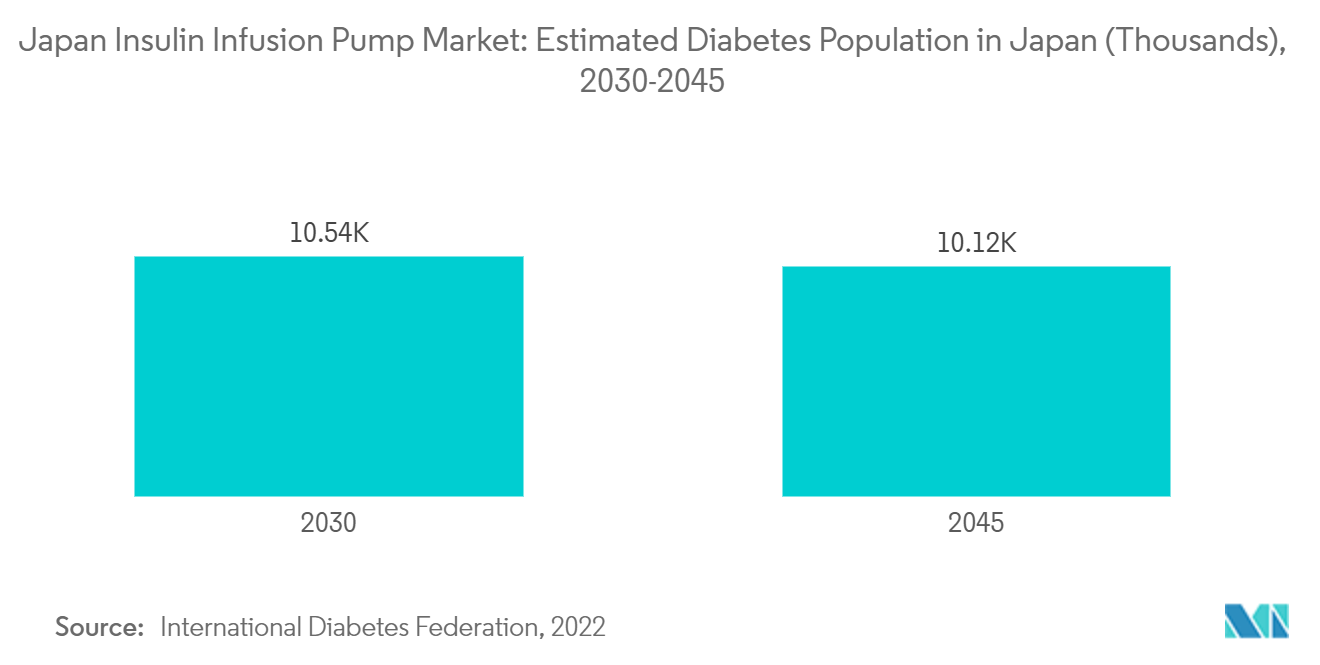Market Trends of Japan Insulin Infusion Pump Industry
The Insulin Pump Segment is Expected to Witness Growth Over the Forecast Period
The insulin pump mirrors the human pancreas; it administers insulin continuously or as needed, replacing traditional daily injections or insulin pens. Widely adopted by individuals with type 1 diabetes (T1DM), these pumps offer a time-tested alternative, ensuring near-physiological insulin delivery when the pancreas falters. Notably, pumps equipped with remote controls empower parents to manage insulin dosages from a distance, even as their child plays or eats.
Compared to injections, insulin pumps offer more precise dosing, minimize blood glucose fluctuations, and are less discomforting. These advantages are propelling the market's growth trajectory.
Continuous subcutaneous insulin infusion (CSII) and continuous glucose monitoring systems (CGMs) have revolutionized patient care, especially in ambulatory settings. Market players are intensifying collaborations and product developments to bolster their market foothold. For instance, in March 2023, BlueStar, a joint venture between Astellas Pharma and Welldoc, partnered with Roche DC Japan to integrate its blood glucose self-monitoring device, Accu-Check Guide Me, with BlueStar technology, which was slated for clinical trials in Japan in fiscal year 2023. With obesity rates on the rise, a surge in hereditary risks for type 2 diabetes, and a growing number of type 1 diabetes cases, the insulin pump segment is poised for further expansion.

The Prevalence of Diabetes is Rising
Diabetes poses a significant health challenge in Japan. The country's surging diabetes rates have set off alarm bells, prompting urgent responses from healthcare authorities and stakeholders.
Japan's Ministry of Health, Labor, and Welfare has highlighted diabetes as a top health priority. Of particular concern is the economic strain, especially for type 2 diabetes patients with additional conditions like hypertension, hyperlipidemia, or those facing complications.
Diabetes is on the rise across all age brackets in Japan, a surge attributed to a combination of factors: a burgeoning obese population, unhealthy dietary habits, and sedentary lifestyles. According to the International Diabetes Federation (IDF), Japan's diabetic populace is set to hit 10,542.7 thousand by 2030 and 10,117.9 thousand by 2045.
Japan's aging population, especially susceptible to diseases, combined with increasing obesity due to sedentary lifestyles and erratic eating patterns, are primary drivers behind the nation's climbing diabetes rates. As of December 2023, data from the Ministry of Internal Affairs and Communications (May 2024) revealed that nearly 30% of Japan's populace was aged 65 or older. With this aging demographic, Japan anticipates a further surge in diabetes cases, leading to increased demand for oral anti-diabetic medications.
Given the mounting prevalence of diabetes and Japan's proactive approach, the insulin infusion pump market is primed for substantial growth during the forecast period.
Japan's struggle with diabetes presents a dual narrative of challenges and opportunities. The nation's dedication to combatting this health crisis through innovative solutions and updated protocols will play a pivotal role in curbing the future health and economic ramifications of diabetes.


